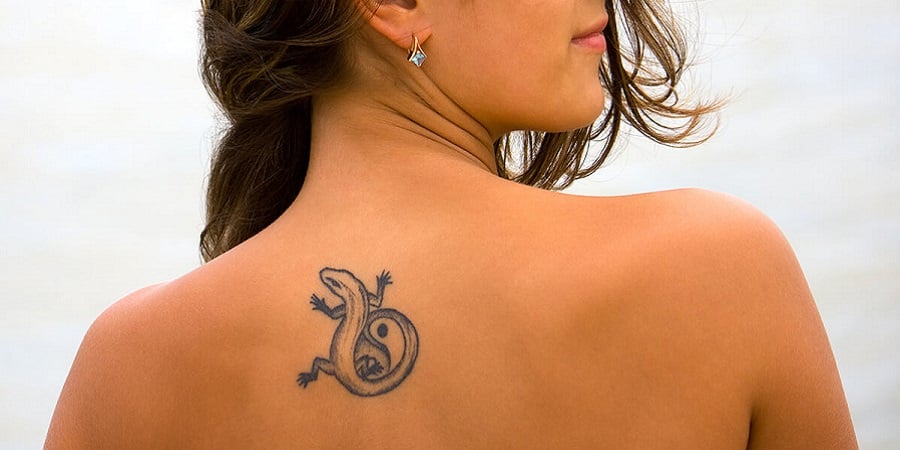Removing an unwanted tattoo is a decision many people face—whether it's due to regret, a lifestyle change, or simply wanting a clean slate. Among the available options, Laser Tattoo Removal in Riyadh {إزالة الوشم بالليزر في الرياض} stands out for its safety, precision, and effectiveness. But how does it really compare to other methods on the market?
From surgical excision to tattoo removal creams, there are a variety of alternatives people consider. This article will break down the most common removal methods, highlight their pros and cons, and help you determine which is the best option for your skin, goals, and budget.
Understanding the Removal Options:
There are several widely known tattoo removal methods, each with different levels of effectiveness, safety, and risk.
The most common tattoo removal methods include:
- Laser Tattoo Removal
- Surgical Excision
- Dermabrasion
- Tattoo Removal Creams
- Chemical Peels
- Salabrasion
Let’s explore how each one works and compare them to laser removal.
Laser Tattoo Removal: The Modern Standard
Laser tattoo removal uses targeted light energy to break down ink particles, which are then naturally flushed out by the body. This technique has become the gold standard in tattoo removal due to its effectiveness and safety when performed by trained professionals.
Why laser leads the way:
- Works on most tattoo colors with the right laser
- Minimal risk of scarring with proper aftercare
- Safe for most skin types with the right technology
- Non-invasive and no cutting or scraping involved
- Gradual fading offers better skin preservation
Clinics offering Laser Tattoo Removal in Riyadh often use Q-switched or picosecond lasers—technologies that can handle complex ink combinations and different skin tones effectively.
Surgical Excision: A More Drastic Option
Surgical excision involves physically cutting out the tattooed skin and stitching the area closed. It’s mostly reserved for very small tattoos or situations where laser treatment isn’t an option.
Pros:
- Immediate removal in a single session
- No risk of incomplete fading
Cons:
- Always leaves a scar
- Not suitable for large tattoos
- Requires local anesthesia and recovery time
- Higher chance of infection or complications
It may be effective for small areas, but it’s rarely the preferred method due to its invasiveness.
Dermabrasion: Sanding Down the Skin
This method uses a high-speed rotary device to "sand" the tattooed layers of skin. It’s an older technique that’s become less common due to better alternatives.
Pros:
- Can be less expensive than lasers in some cases
- May fade superficial tattoos
Cons:
- High risk of skin damage, scarring, or discoloration
- Painful with long recovery periods
- Not effective on deeper or colorful tattoos
Dermabrasion often results in uneven skin texture, especially for larger tattoos.
Tattoo Removal Creams: Too Good to Be True?
Over-the-counter creams and ointments promise pain-free removal at home. However, these products are largely ineffective and can be harmful to your skin.
Pros:
- Affordable and easy to use
- Available without prescription
Cons:
- No clinical evidence of success
- Only affect the top skin layer (tattoos reside deeper)
- Risk of skin irritation, burns, or allergic reactions
- Cannot reach or break down ink particles
These creams offer the illusion of convenience but rarely deliver meaningful results.
Chemical Peels: Superficial and Risky
Using acids like TCA (trichloroacetic acid), chemical peels aim to exfoliate the skin’s surface and potentially lighten the tattoo.
Pros:
- Can help with very light or faded tattoos
- Non-invasive
Cons:
- Doesn’t reach deep ink
- High risk of scarring or pigmentation issues
- Not effective for colorful or professional tattoos
Peels are better suited for skincare than tattoo removal.
Salabrasion: An Outdated and Painful Method
Salabrasion is a traditional technique involving salt and abrasion to scrape away layers of skin. It’s rarely used in modern practices due to its risks and inefficiency.
Pros:
- Very low cost
- May fade extremely light tattoos
Cons:
- High chance of infection and scarring
- Very painful with long healing time
- Often results in inconsistent results
This method is widely discouraged by dermatologists and skin care professionals.
Key Comparison: What Really Works Best?
When comparing all the available options, laser removal stands out as the most clinically proven, safe, and customizable method for most people.
Here’s a quick side-by-side comparison:
Method Effectiveness Scarring Risk Pain Level Sessions Needed Suitable For Large Tattoos Laser Removal High Low Moderate 6–10 Yes Surgical Excision High (small) High High 1 No Dermabrasion Low-Moderate High High 1–2 No Creams Very Low Low-Moderate Low Ongoing No Chemical Peels Low Moderate Moderate Multiple No Salabrasion Very Low Very High Very High Multiple No Making the Right Choice for You:
Ultimately, the best tattoo removal method depends on your individual needs, skin type, and the nature of the tattoo. However, for most cases—especially larger or professional tattoos—laser removal is the safest and most effective choice.
If you’re considering Laser Tattoo Removal in Riyadh, be sure to:
- Choose a clinic with modern laser equipment and qualified technicians
- Ask for a personalized consultation to assess your skin and tattoo
- Inquire about aftercare and expected results specific to your case
Professional guidance will ensure you're choosing the safest path toward clear skin.
Final Thoughts:
While several tattoo removal methods exist, few compare to the precision and reliability of laser treatment. With the right provider, laser removal offers lasting results with minimal risk — making it the best option for most people looking to erase their ink safely.
In cities like Riyadh, access to top-tier clinics makes it easier than ever to begin your removal journey. Be informed, ask questions, and take the first step toward skin that reflects who you are today.

